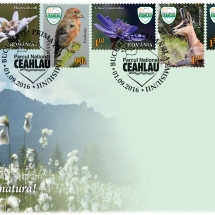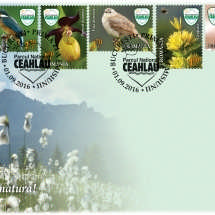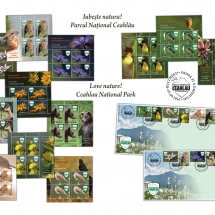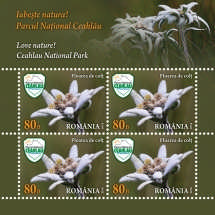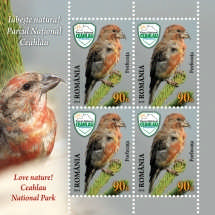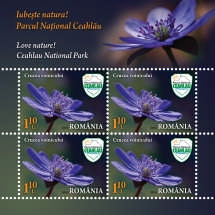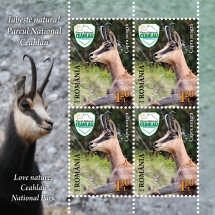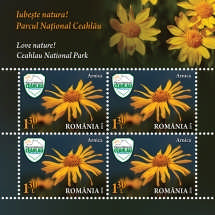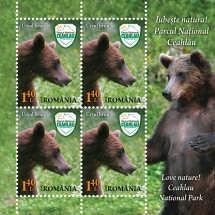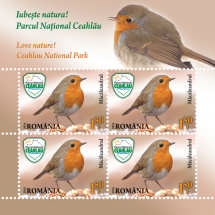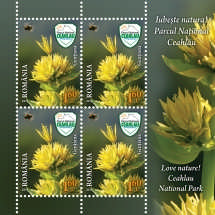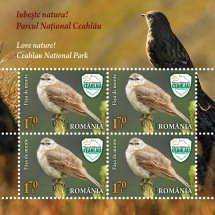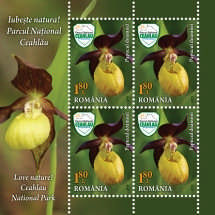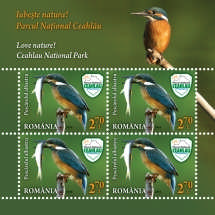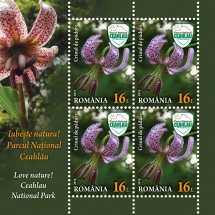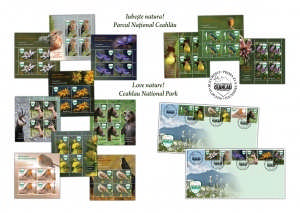 Romania is a blessed country with various areas of unique beauty, with places where nature charms your sight and takes your breath away at each step.
Romania is a blessed country with various areas of unique beauty, with places where nature charms your sight and takes your breath away at each step.
Consistently promoting philatelic topics about Romanian natural beauties and riches, Romfilatelia has created a postage stamp issue depicting flora and fauna rarities in an area considered indeed a marvel of nature – the Ceahlau National Park.
The philatelic project Love Nature! Ceahlau National Park is thus included in the series of stamps that promote Romania and its national richness, being available to purchase starting with Thursday, September 1st, 2016 in Romfilatelia shops from Bucharest, Bacau, Brasov, Cluj-Napoca, Iasi and Timisoara.
Ceahlau National Park was selected as the theme of the latest Romfilatelia project due to its uniqueness, as the area is well-known for its great diversity of plants and animals it hosts. The conservation of the Park’s heritage started in 1997, and meanwhile Ceahlau gained the status of protected area by the founding of an Avifauna protection area of the National Park, and by it being declared a Site of European Community Importance.
The twelve postage stamps of the issue illustrate images of flora and fauna existing in the Ceahlau National Park area.
The stamp with the face value of lei 0.80 illustrates the Edelweiss (Leontopodium alpinum), also called the Queen’s flower. Declared a natural monument and protected by law, the flower is a symbol of those who love hiking in the mountains. The Edelweiss is often found on rocky ridges and even rarer on mountain plateaus, and in our country can be seen flowering in July and August.
Red crossbill (Loxia curvirostra) can be found on the stamp with the face value of lei 0.90. This is a sedentary bird, of medium size, that inhabits the conifer forests of the Carpathian Mountains. It has a thick bill whose curved mandibles cross at the top, hence its Romanian popular name (little scissors), and its food is based almost exclusively on seeds of conifers.
Anemone transsilvanica, Liverwort or Liverleaf (Hepatica transsilvanica Fuss) is shown on the stamp with the face value of lei 1.10. This is a rare plant which grows only in the Carpathian Mountains and is declared a natural monument, being protected by the law. This species has a particular aesthetic and ecological value, being, through its beauty, a true delight for trekking lovers.
On the stamp with the face value of lei 1.20 is represented the Chamois (Rupicapra rupicapra), one of the most valuable species of fauna in Romania, protected by law and considered a true pearl of the mountains. It can be found on the peaks of mountains, the wondering of the Chamois being dictated by the necessity to procure food and the need to adapt to climacteric conditions. One can say in broad strokes that during summer the Chamois stay in the area of alpine peaks and during winter they stay under the shelter of the forest, but the differences between individuals are great, varying according to sex, age and temperament.
Arnica (Arnica montana) is to be found on the stamp with the face value of lei 1.30, being a perennial plant that grows in mountainous regions, and has flowers like daisies of bright yellow. Its name seems to be deriving from the Greek word “arnikos” – lamb’s pelt, but other common names for it are: the wood’s chariot, the sun’s grass, the fairies’ chariot. It can be found at 1000 m altitudes and is the basis for many mixtures, usually tinctures and extracts.
The stamp with the face value of lei 1.40 depicts the Brown bear (Ursus arctos), a long-lived animal, living up to 30 years in the wild and up to an extra 20 years in captivity. The largest number of brown bears in Europe can be found in Romania, in the Carpathian Mountains, about 6,000 specimens. This animal is present in folklore since the oldest times, is mentioned by author Mircea Eliade as the totem of Dacian warrior monks, the bear becoming a legendary figure, regarded with fear and admired at the same time.
The stamp with the face value of lei 1.50 illustrates the European robin (Erithacus rubecula), also known in Romanian as red craw, is an insectivorous bird and in Romania is encountered throughout the year. The plumage of both sexes is brown, with a rusty patch on the craw and chest. They nest in tree hollows, under river banks or in fallen tree trunks, during summer being found in mountain forests and in winter descending into the plains, in parks and gardens.
Great yellow gentian (Gentiana lutea) is represented on the stamp with the face value of lei 1.60, being a herbaceous plant protected by law and declared a natural monument. It grows as part of Romania’s wild flora, from the plains to the sub-alpine region, being commonly known as: yellow gentian, bitter root, bitterwort, centiyane and genciana. Its Latin name, Gentiana lutea, comes from antiquity, from Gentius, the King of Illyria, who seems to have discovered the tonic properties of the plant.
Water pipit (Anthus spinoletta) appears on the stamp with the face value of lei 1.70. It is a bird that lives in meadows, clearings or forest margins where the vegetation is dense, nesting exclusively on the heights of the Carpathians. It has a dark gray color, with darker spots on the upper side.
On the stamp with the face value of lei 1.80 is depicted the Lady’s slipper orchid (Cypripedium calceolus), a very rare orchid species protected by law. The strain shows only 3-5 leaves and a
single flower on top, like a moccasin, a feature which has brought the name of slipper. The plant grows until it reaches a height of maximum 20 – 30 cm and blooms from July to September.
The stamp with the face value of lei 2.70 shows the common kingfisher, also known as the Eurasian kingfisher (Alcedo atthis), one of the most colorful birds in our country. Blue-green on the back, brick-red underneath, on the abdomen and around the eye, with a white chin and sides of the neck, it has short feet and tail, and a big, strong beak. The bird lives on the banks of fast running water or clear, still waters, its main food consisting in small fish, aquatic insects, their larvae, but also small crustaceans and ¬tadpoles.
Martagon lily or Turk’s cap lily (Lilium martagon) is presented on the stamp with the face value of lei 16. This rare species, declared a natural monument and protected by law, is one of the most beautiful and graceful plants to grow in the oak and birch forests of our country. The martagon lily may be easily recognized in nature because of its 5 cm flowers, with six violet-pink petals, which display red spots, with six long stamens, perfumed only in the evening.
The issue is completed by a set of two first day covers, and as page composition were used the sheet of 80 stamps + 1 label and the block of 4 stamps.
Romfilatelia thanks the Ceahlau National Park and photographers George Avanu, Dorin Bofan, Octavian Chende, Cristian Mihai and Serban Simbotelecan for the documentary support granted in the creation of this postage stamp issue.
For further information, please contact the Public Relation Office:
Tel: 021 / 337 24 42
anamaria.anton@romfilatelia.ro



